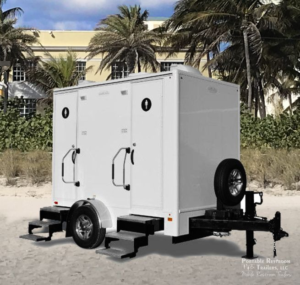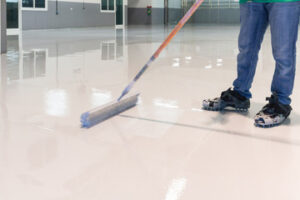Insulation removal is usually part of a renovation or retrofit. It is best left to a professional insulation company.
Upgrading old insulation or replacing damaged or contaminated insulation can help improve temperature regulation and reduce energy bills. It also prevents pest infestation and structural damage. Click Here to learn more.

Insulation removal vacuums are specialized machines that remove insulation and discharge it into recovery bags for recycling or disposal. They are available in a range of sizes and types.
1. Vacuum
Before starting your insulation removal process, it’s important to ensure you’re prepared with the necessary equipment and safety precautions. This includes a pair of heavy-duty work gloves, eye protection, and a respirator to prevent irritation from fiberglass particles. It’s also a good idea to work in a well-ventilated area to reduce your exposure to dust and other airborne contaminants. In addition, you should have access to a ladder, and bags for disposal of the old insulation material.
Once you’re ready to start, cover any walls and floors you don’t want covered in dust. Then, begin by putting on your protective gear and turning on the vacuum. After that, set up the machine and attach a bag to catch the insulation material. Then, start removing the insulation from the attic, working your way around the house. Once you’ve finished, remove the vacuum bag and dispose of it.
Vacuum systems are a great choice for insulation removal, as they eliminate the need to scrape or dig out the material by hand. This not only saves time but can also reduce the risk of health concerns associated with traditional methods. Additionally, vacuum systems work fast, which means you can get the job done quickly and efficiently.
When using a vacuum system to remove your insulation, be sure to follow the instructions provided by the manufacturer. You may need to adjust the hose or attachments to ensure that all areas of your attic are reached. Additionally, be sure to use caution when operating the machine to avoid getting tipped or falling down through an attic hatch. If you’re unsure about how to operate an insulation removal vacuum, contact a professional spray foam contractor for tips and advice.
2. Rake
Insulation removal and replacement can be an important home improvement project that improves a building’s energy efficiency and indoor air quality. It can also help reduce maintenance costs, while promoting healthy living environments by eliminating harmful substances like pests and mold. Insulation is available in a variety of materials and installation techniques, so homeowners should consider their unique needs and circumstances when deciding which type of insulation is right for them.
Choosing a professional company to perform an insulation removal and replacement project is an essential step in the process. The best way to find a qualified contractor is to ask for references from previous customers and read online reviews. A reliable insulation removal company should be able to provide detailed estimates and explain their process for handling potential issues like asbestos or mold. It is also essential to choose a contractor that complies with local environmental regulations for the proper disposal of old insulation.
The process of removing and replacing insulation in older homes typically involves sealing the space to prevent contamination and carefully extracting the old material using specialized equipment. The attic or crawl spaces are then cleaned and sanitized, and the old insulation is disposed of according to environmental regulations. The new insulation is then installed to create a more comfortable and energy efficient home.
Blown-in cellulose insulation can be a challenging DIY project, but it can be managed with careful preparation and the right tools. It is important to clear the area of any stored items and to ensure a safe workspace by setting up a ladder that is appropriate for the attic access door. It is also advisable to have a set of protective gear on hand, including a mask or respirator and gloves. Portable lights are also recommended for illumination.
Once the workspace is cleared and protected, a garden rake or pitchfork can be used to spread the insulation into loose sections, making it easier for a vacuum hose to pick it up. A utility knife may be necessary to cut oversized batts into manageable sections for removal. Once the loosened insulation has been collected, it should be dumped into bags or into a dumpster for disposal.
3. Dustpan
Old insulation contains harmful contaminants, like mold spores, that can impact indoor air quality. Removing it is a critical part of keeping your home healthy and safe for your family. You can do it yourself if you’re comfortable with using the right equipment. Before beginning, make sure to work in a well-ventilated area and seal off the space where you’ll be working to prevent the spread of dust particles to other parts of your home.
It’s also recommended to wear protective gear, such as a respirator and a pair of gloves, to reduce your risk of exposure to airborne particles while you’re removing insulation. A dust mask can also help to reduce skin irritation from breathing in fiberglass particles. You’ll want to take frequent breaks during the process, especially if it’s hot in the attic. High temperatures can cause heat exhaustion, and moldy insulation can aggravate your respiratory system.
If you’re not comfortable with using a vacuum, you can use a dustpan and a rake to remove loose insulation. However, this method is significantly more time-consuming and may be difficult for smaller spaces. If you do choose to use this method, be sure to wear protective gear and thoroughly clean your attic before you begin removing insulation.
Regardless of whether you’re vacuuming or scooping, all loosened insulation should be properly bagged before disposal. This will reduce the risk of escaping fiberglass particles and ensure that your attic and home are clean when you’re finished. If you’re unsure of the proper disposal methods for your insulation type, consult with your local waste management office to ensure that you’re following regulations.
To get started with the insulation removal process, position your equipment near your attic access door. Clear a path from the entrance to the door and cover anything inside your house with plastic sheeting or drop cloths to avoid contamination. Once you’re ready to start, suit up in your protective gear and set up the vacuum to begin suctioning out the insulation. Afterward, switch to the rake and dustpan to gather and transfer the material into bags for disposal.
4. Bags
Old insulation can harbor mold spores that can not only make you sick but compromise the structural integrity of the area in which it is located. Removing old insulation will help prevent these potential problems.
When you vacuum with an insulation remover, the insulation is drawn into the hose and into the insulation removal bags that are provided. These large, heavy duty bags are designed to hold a lot of insulation before you need to change them. They are easy to move from place to place and they stack easily. These bags are compatible with the Meyer Versa-Vac OS and Vantage-Vac insulation removal vacuums.








